When it comes to caring for our furry friends, we always want to ensure that what we’re using is safe and beneficial for them.
That’s why considering the use of essential oils, particularly lavender oil, requires a careful approach.
Lavender oil is celebrated for its calming and soothing properties, which might be helpful for dogs who experience anxiety or stress.
It’s important to recognize, though, that while some essential oils can be harmful to dogs, others can be used safely under the right conditions.
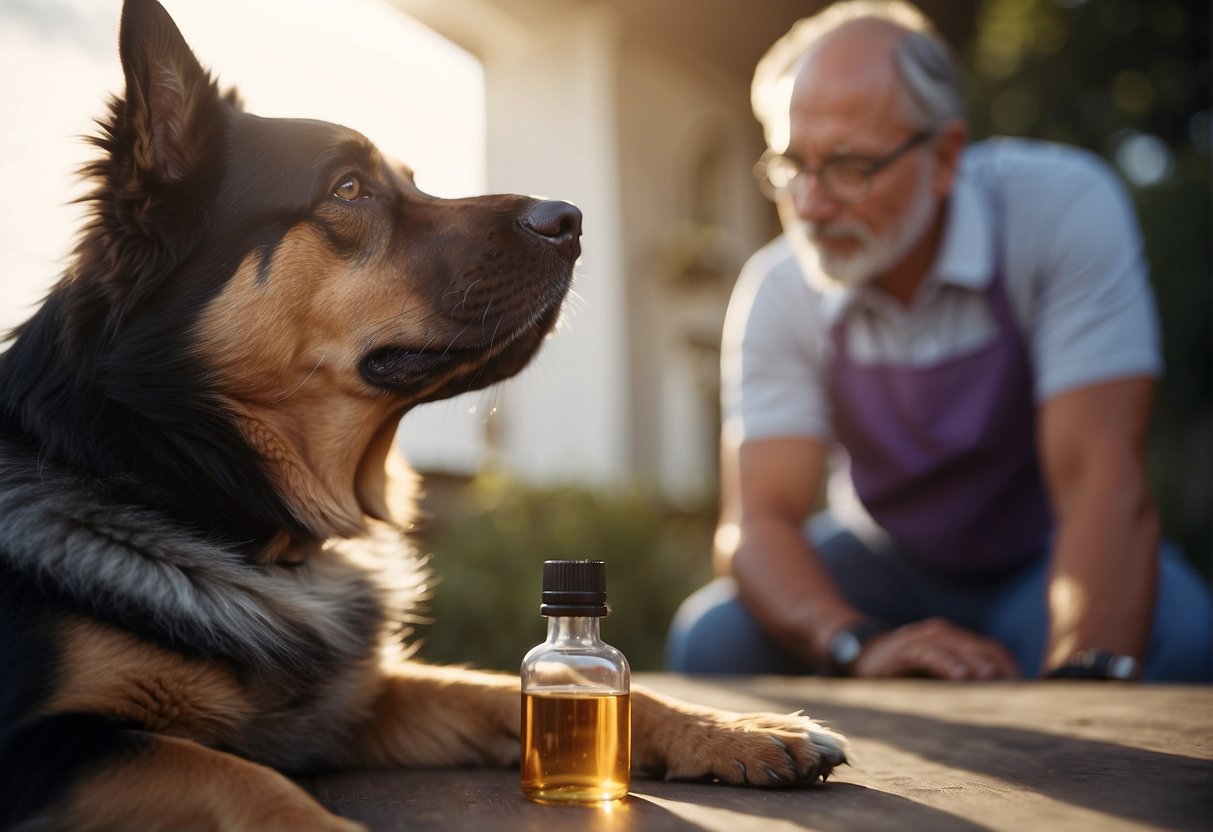
Understanding the safety of lavender oil for our canine companions means doing our research and using products responsibly.
Properly diluted lavender oil can offer a range of benefits, from reducing anxiety to helping with sleep.
But we must be vigilant, as using lavender oil incorrectly can pose risks to a dog’s health.
When we consider integrating lavender oil into our dog’s routine, consulting with a vet is vital to ensure we’re not putting our pets at risk.
By taking the right precautions, we can make informed decisions about using lavender oil around our dogs.
Understanding Lavender Oil and Its Uses
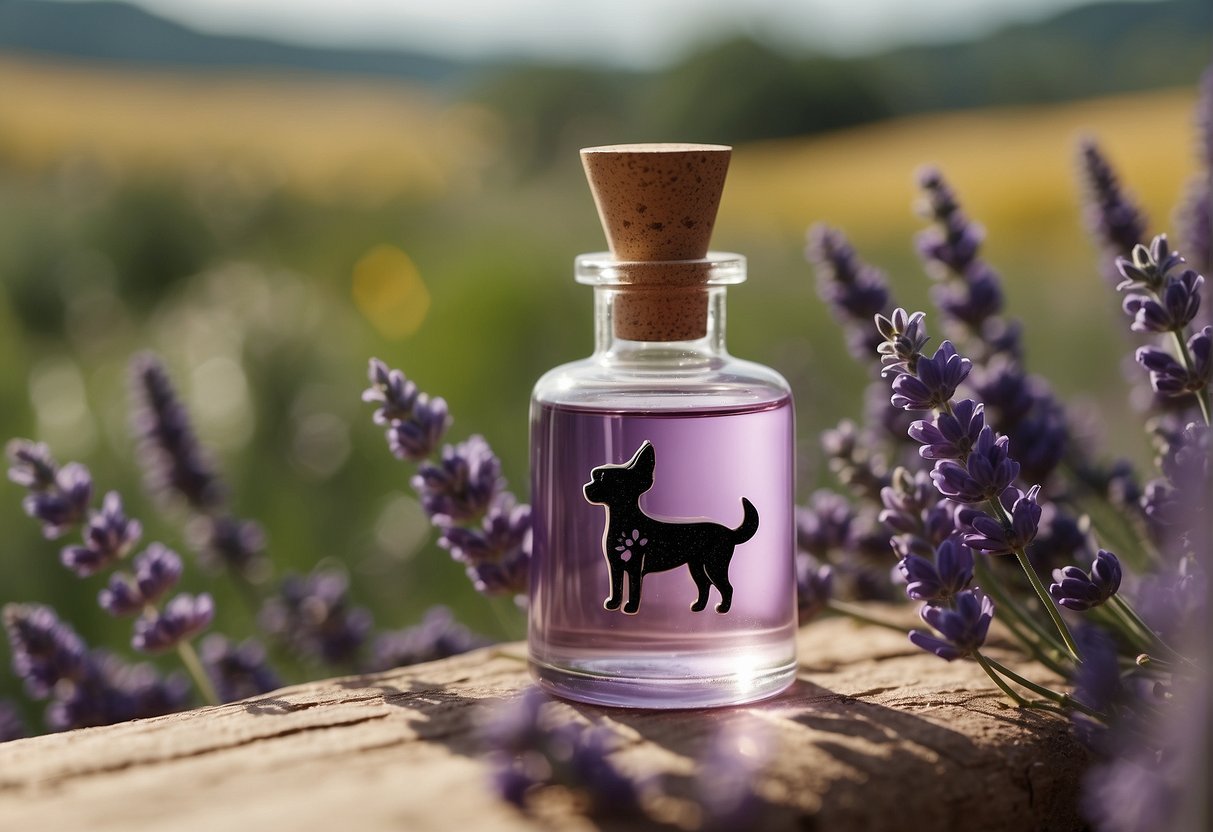
When we discuss lavender oil, we’re delving into a natural remedy renowned for its versatile uses and health benefits, particularly in aromatherapy and skincare, as well as its potential advantages for our canine companions.
Chemical Composition of Lavender Oil
Lavender essential oil is derived from the flowers of the Lavandula angustifolia plant and is composed of various compounds that contribute to its therapeutic properties.
The two primary constituents are linalool and linalyl acetate, which are believed to be responsible for the oil’s calming effects and pleasant fragrance.
Common Uses in Aromatherapy and Skincare
In aromatherapy, we appreciate lavender oil for its ability to promote relaxation and reduce stress.
It’s commonly diffused into the air to create a serene environment.
Additionally, lavender oil is a staple in skincare routines, where it’s used for its soothing properties and to help alleviate minor skin irritations.
Benefits for Canine Health
We also find lavender oil to be useful for our furry friends. When properly diluted and applied, it can help soothe itchy skin.
However, it’s crucial for us to use lavender with caution around dogs, as their sensitivity to essential oils is higher than ours.
Research suggests that lavender can be a natural anti-inflammatory and antihistamine, which might help in relieving discomfort caused by allergies or skin conditions in dogs.
Safety and Risks of Lavender Oil for Dogs
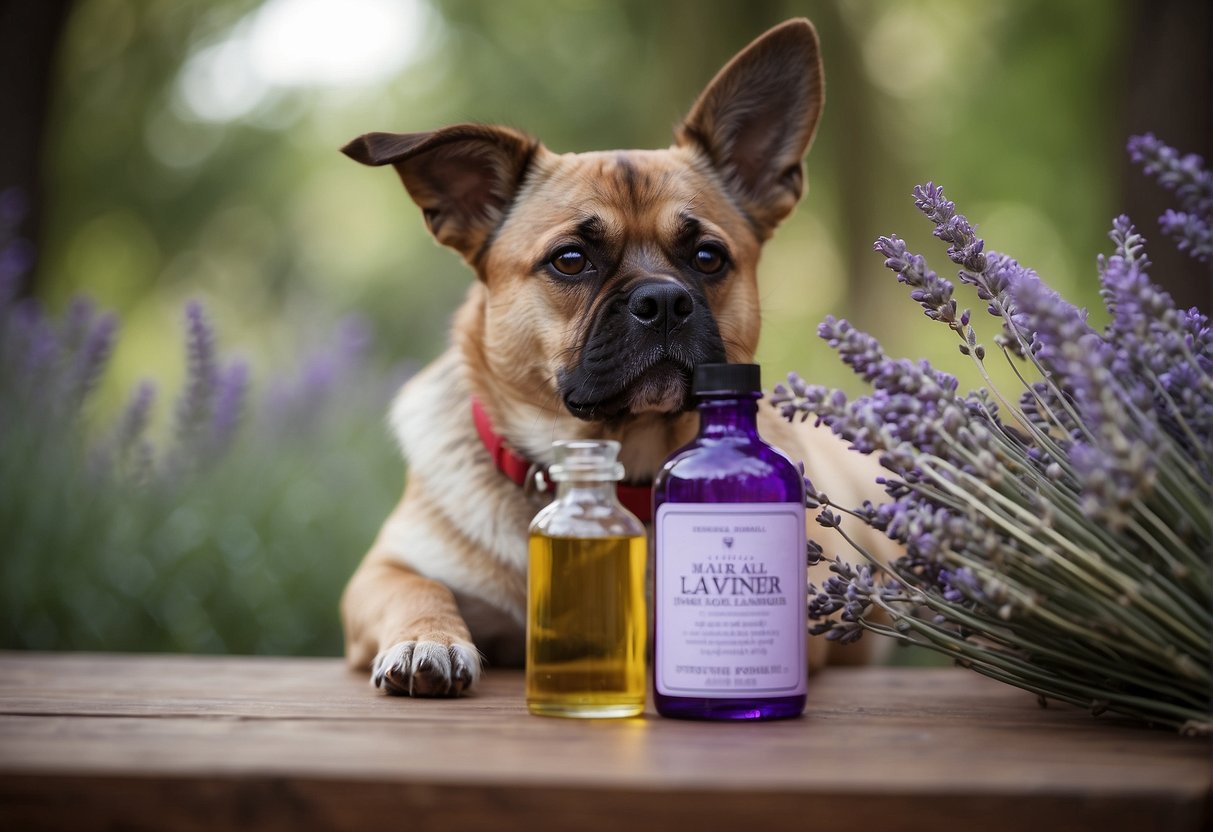
Understanding the safety and risks of lavender oil for dogs is crucial for pet owners looking to use this essential oil.
We’ll explore the potential toxicity, proper topical application, and how to safely diffuse lavender oil around your beloved pooch.
Potential Toxicity and Side Effects
When we consider lavender oil for our dogs, we must recognize its potential toxicity if not used correctly.
Lavender oil, in its concentrated form, is toxic to dogs and can lead to a range of side effects.
Serious signs indicative of lavender oil poisoning include vomiting, diarrhea, excessive drooling, difficulty breathing, and skin or mouth irritation.
If you suspect your dog has been poisoned by lavender oil, it is critical to seek immediate assistance from a veterinarian.
Safe Practices for Topical Use
For topical use, ensuring that lavender oil is properly diluted is key to safety.
We recommend consulting with your vet to determine the appropriate dilution ratio.
Typically, only a few drops of lavender oil should be mixed with a carrier oil before application.
This can help prevent skin irritation from occurring.
A spot test is also a wise step to make sure your dog doesn’t react negatively to the mixture.
Instructions for Diffusing Around Dogs
When diffusing lavender oil around dogs, we need to make certain the environment remains safe for them.
Always use a diffuser in a well-ventilated area to avoid concentrated exposure, which could lead to respiratory issues.
Additionally, make sure your dog has the option to leave the room where the oil is being diffused.
This choice allows them to escape if they find the scent aversive or if it’s causing them discomfort.
Proper Dilution and Application
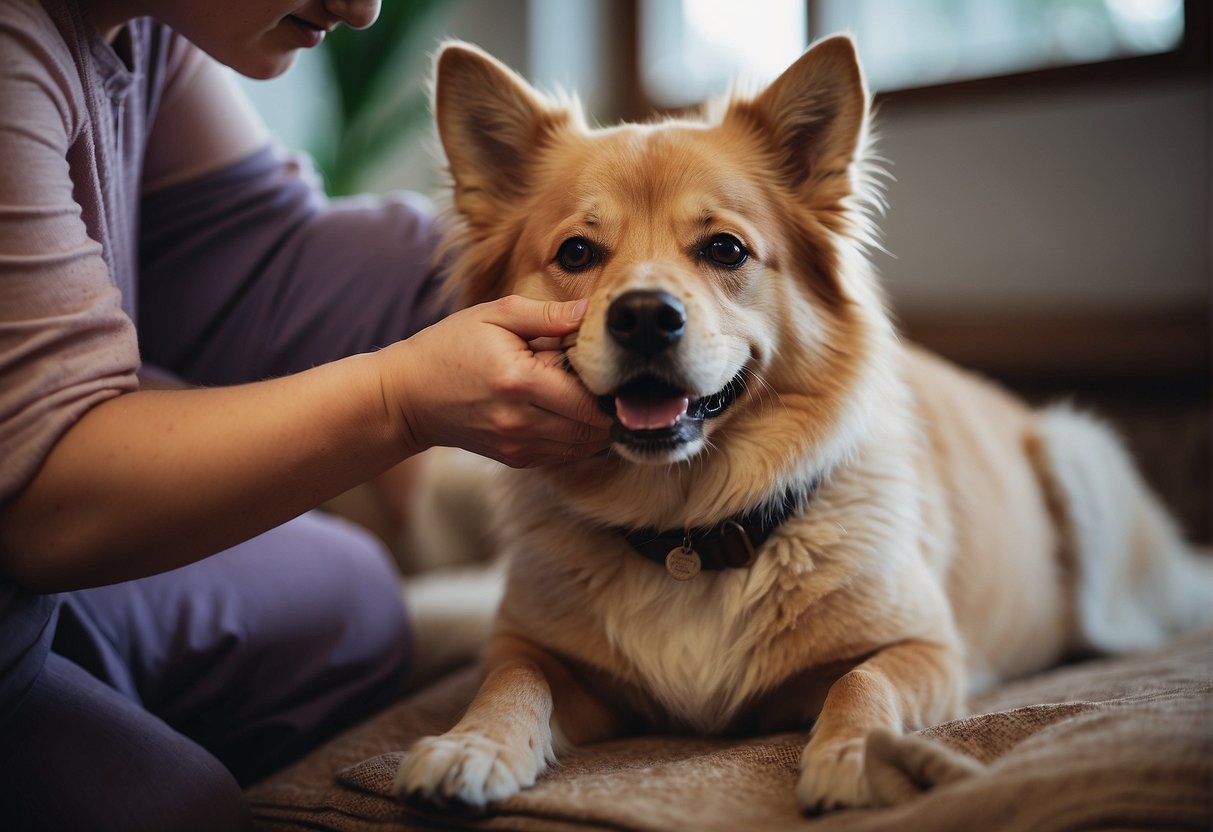
When we introduce lavender oil into our dogs’ care, ensuring proper dilution and application is crucial for their safety and wellbeing.
Using the correct carrier oils and methods of topical application protects their skin from irritation and maximizes the healing benefits.
How to Dilute Essential Oils
To start, it’s important that we dilute essential oils before applying them to dogs.
A general guideline we can follow is to add about 10 drops of lavender essential oil to ½ ounce of a carrier oil.
For larger volumes, maintain this ratio to ensure the mixture isn’t too strong for your dog’s sensitive skin.
Carrier Oils and Their Role
Carrier oils are used to dilute essential oils and carry them safely to the skin.
They’re often extracted from the fatty part of a plant and are gentle enough to use on itchy or irritated skin.
Here are some carrier oils we can use for diluting lavender oil:
- Coconut Oil: Moisturizing and soothing for the skin.
- Almond Oil: Great for dogs with dry, itchy skin.
- Jojoba Oil: Mimics the skin’s natural oils and absorbs easily without leaving a greasy residue.
Applying Lavender Oil Topically on Dogs
When it comes to applying lavender oil topically on dogs, we must be careful to avoid any sensitive areas, such as the eyes, nose, and genital regions.
Start by applying a small amount of the diluted oil to a non-sensitive part of the skin to test for reactions.
If there’s no adverse reaction after 24 hours, you can gently apply it to areas affected by inflammation or irritated skin.
Dealing with Pests and Common Canine Issues
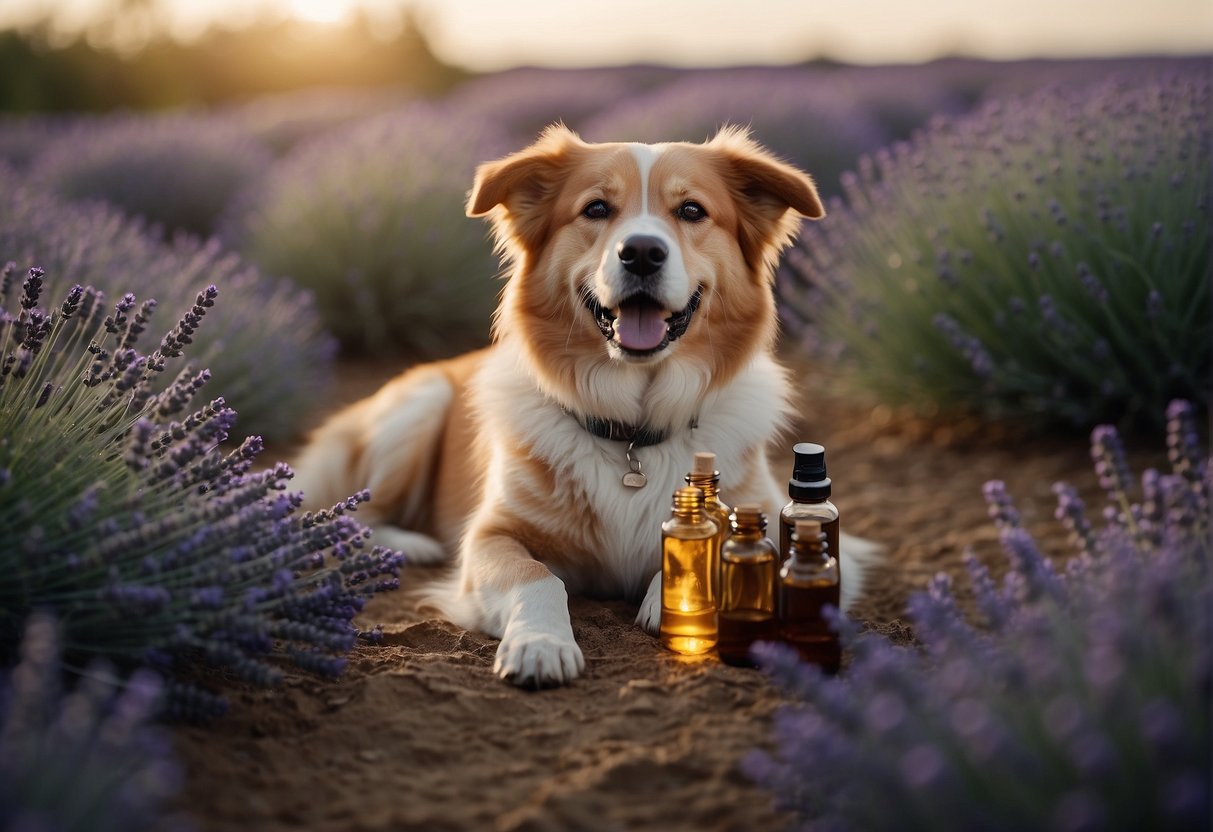
When we look for ways to keep our beloved dogs healthy and comfortable, it’s always a bonus to find natural solutions.
In dealing with pests and soothing common canine discomforts, lavender oil appears to be a promising ally.
Lavender Oil as a Natural Repellent
Lavender oil has been praised for its ability to repel troublesome insects like fleas and ticks.
When applied correctly, it can serve as a natural bug repellent, keeping our pets free from these annoying pests.
It’s essential, however, to use it in safe concentrations to prevent any potential skin irritation.
- Fleas: A light mixture of lavender oil and water can help deter these pests.
- Ticks: Regular checks are crucial, but lavender oil may reduce the attraction of ticks to our furry friends.
Soothing Itchy Skin and Allergies
For those times when our dogs can’t stop scratching, lavender oil might offer some relief.
Its anti-bacterial properties and soothing capabilities can help calm itchy or irritated skin, which is beneficial for dogs suffering from allergies.
Remember to dilute the oil before application to mitigate any risk of allergic reactions.
- Anti-bacterial: Helpful in keeping the skin clean and less prone to infections.
- Allergic Reactions: May soothe the skin, but be cautious to avoid causing more allergies.
Calming Anxious Dogs
Any pet owner knows that anxiety can be a significant issue for some dogs.
Lavender oil is widely acknowledged for its calming effects, which can help settle our dogs during storms, fireworks, or other stressful situations.
A gentle massage or diffusion can spread the soothing scent, helping our dogs relax.
- Calming: Gently rub a diluted mixture into your dog’s ears or fur.
- Anxiety: Diffuse the oil around the house during high-stress events to provide a calming atmosphere.
When to Consult a Veterinarian
As responsible pet owners, we must be vigilant in recognizing when our dogs are in need of professional medical attention, especially when it comes to the use of lavender oil.
It’s essential to know the signs of adverse reactions and the appropriate moments to seek a veterinarian’s expertise.
Recognizing Allergic Reactions and Poisoning Symptoms
If our dog shows signs of an allergic reaction to lavender oil, such as itching, hives, or swelling, it’s crucial to contact a veterinarian immediately.
Watch closely for symptoms of poisoning too, which can include vomiting, diarrhea, and excessive drooling.
Prompt recognition of these symptoms is key to ensuring the safety and health of our furry friend.
Addressing Accidental Ingestion
Should our dog accidentally ingest lavender oil, we mustn’t delay in seeking professional help.
The ingestion of lavender oil can be toxic, leading to a serious poisoning incident.
Symptoms may vary, but vomiting or diarrhea are common indicators of ingestion.
If you observe these signs or if your pet has an adverse reaction after ingesting lavender oil, contacting a veterinarian immediately is imperative for the well-being of our dog.















